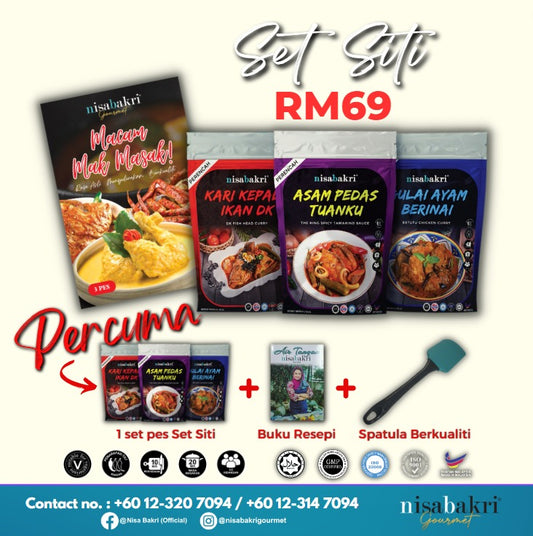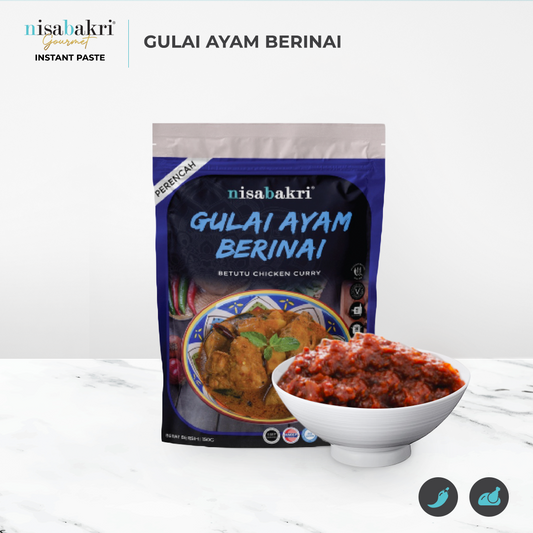A Spicy History: The Origins and Evolution of Gulai
Gulai is a traditional dish that has a long history originating from Southeast Asia, particularly Indonesia, Malaysia, and Singapore. It is a spicy and aromatic stew made with a variety of ingredients and spices, creating a unique flavor that is loved by many.
Gulai has a long history and has evolved over time to include different ingredients and variations. This article will share the history of gulai.

History of Gulai
Gulai has been a popular dish in Southeast Asia for centuries, with its history dating back to the spice trade that flourished in the region. The dish was created as a way to use and preserve the various spices that were traded, which included turmeric, ginger, cumin, coriander, and cardamom.
Over time, the recipe for gulai was refined and adapted to include other ingredients, such as meat, fish, and vegetables.
Origin and Evolution of Gulai?
Gulai is a type of curry that originated in Indonesia and has evolved over time to become a popular dish in many Southeast Asian countries. Here are 3 points explaining the origin and evolution of Gulai:
Origin
The word "gulai" is derived from the Tamil word "kari," which means sauce or gravy. It is believed that the dish was introduced to Indonesia by Indian traders and immigrants who brought with them their own traditional curries. Over time, the Indonesian people adapted the dish to their own tastes and ingredients, resulting in the creation of Gulai.
Regional Variations
Gulai has evolved to have many regional variations, with different ingredients and cooking methods used depending on the area. For example, in Sumatra, Gulai is often made with coconut milk, while in Java, it is often made with tamarind and turmeric. In Malaysia, Gulai is typically made with fish or chicken, and in Thailand, it is often made with beef or lamb.
Ingredients
The ingredients used in Gulai have also evolved over time, with traditional spices like cumin, coriander, and turmeric being supplemented with local ingredients like lemongrass, galangal, and kaffir lime leaves. The use of coconut milk is also a common feature of Gulai, giving it a creamy texture and rich flavor.
What are different Varieties of Gulai and their characteristics?
Gulai is a type of Indonesian curry that is known for its spicy, rich, and aromatic flavors. There are many variations of Gulai, each with its own unique set of characteristics. Here are three popular varieties of Gulai:
Gulai Ayam
This is a chicken curry that is made with a rich and creamy coconut milk base. The curry is typically spiced with turmeric, ginger, galangal, and lemongrass, which give it a warm, earthy flavor. Other common ingredients in Gulai Ayam include potatoes, tomatoes, and kaffir lime leaves. The curry is often served with rice or flatbreads.
Gulai Kambing
This is a goat curry that is made with a spicy, aromatic sauce. The sauce is typically made with a blend of chilies, ginger, garlic, and turmeric, which give it a bright, vibrant flavor. Other common ingredients in Gulai Kambing include cinnamon, star anise, and cardamom. The curry is often served with rice or flatbreads.
Gulai Ikan
This is a fish curry that is made with a tangy, sour sauce. The sauce is typically made with tamarind, which gives it a distinctive sour flavor. Other common ingredients in Gulai Ikan include chilies, turmeric, and lemongrass. The curry is often served with rice or flatbreads.
Overall, Gulai curries are known for their bold flavors, rich textures, and complex spice blends. Whether you prefer chicken, goat, or fish, there is a Gulai curry to suit every taste.
What are the Ingredients used in Gulai?
While the specific ingredients used in Gulai can vary depending on the recipe and regional preferences, there are some common ingredients that are often found in this dish. Here are three key ingredients used in Gulai:
Coconut Milk
Coconut milk is a creamy and flavorful liquid that is extracted from the grated flesh of mature coconuts. It is a key ingredient in Gulai, providing a rich and creamy base for the curry sauce. Coconut milk is also a good source of healthy fats and can add a subtle sweetness to the dish.
Turmeric
Turmeric is a bright yellow spice that is often used in Indian and Southeast Asian cuisines. It has a warm and slightly bitter flavor and is commonly used in Gulai to add color and depth of flavor to the dish. Turmeric is also believed to have anti-inflammatory properties and is a good source of antioxidants.
Lemongrass
Lemongrass is a tall, fragrant grass that is commonly used in Southeast Asian cooking. It has a bright, lemony flavor and is often used in Gulai to add a fresh and aromatic quality to the dish. Lemongrass is also believed to have medicinal properties and is a good source of antioxidants.
All the ingredients used in Gulai are designed to create a complex and layered flavor profile that balances heat, sweetness, and tanginess. By combining ingredients like coconut milk, turmeric, and lemongrass, chefs can create a rich and satisfying curry that is both delicious and nutritious.
Traditional and modern methods of preparing Gulai
Recipe for Gulai has remained largely the same over the years, there are some differences between traditional and modern methods of preparing this dish. Here are some of the key differences between the two:
Traditional Method
The historical method of preparing Gulai involves slow-cooking the ingredients in a large clay pot over an open fire. The ingredients are typically simmered for several hours, allowing the flavors to meld together and the sauce to thicken. This method of cooking results in a rich and flavorful curry with a thick and creamy sauce.
Modern Method
The modern method of preparing Gulai typically involves using a stovetop or oven to cook the ingredients. While this method is faster than the traditional method, it may not result in the same depth of flavor as slow-cooking over an open fire. However, modern methods may involve additional ingredients and techniques, such as using a blender to create a smoother sauce or adding vegetables like bell peppers or carrots for extra flavor and nutrition.
Regardless of the method used, the key ingredients in Gulai remain the same, including coconut milk, spices like turmeric and coriander, and fresh herbs like lemongrass and kaffir lime leaves. Ultimately, the choice between traditional and modern methods of preparing Gulai comes down to personal preference and the available cooking tools and facilities.
Conclusion
Gulai is a delicious and flavorful curry that is known for its rich and spicy taste. It typically contains a blend of coconut milk, turmeric, lemongrass, and other herbs and spices, which combine to create a complex and satisfying flavor profile. Whether prepared using traditional or modern methods, Gulai is a popular dish that is enjoyed by many people around the world.
If you're looking to try Gulai for yourself, we recommend checking out Nisabakri Gourmet, a brand that specializes in Indonesian cuisine. Their Gulai dishes are made with high-quality ingredients and prepared using traditional methods, resulting in a rich and authentic flavor that is sure to delight your taste buds. So why not give Nisabakri Gourmet Paste a try and experience the delicious flavors of Gulai for yourself?
FAQ
1. What is the difference between Gulai and curry?
Gulai is a type of Indonesian curry that typically has a thinner and soupier consistency than other curries. It also typically contains fresh herbs like lemongrass and kaffir lime leaves, which give it a unique flavor profile.
2. How has Gulai influenced US cuisine?
While Gulai is not as well-known in the US as other types of curries, it has influenced some aspects of American cuisine. For example, the use of coconut milk in Gulai has inspired the creation of coconut-based soups, stews, and sauces in American cooking.
3. What ingredients are typically used in Gulai?
The key ingredients in Gulai typically include coconut milk, turmeric, lemongrass, kaffir lime leaves, coriander, cumin, garlic, shallots, and chili peppers. Other ingredients may include meat, seafood, and vegetables like potatoes and eggplant.
4. How is Gulai traditionally served in Southeast Asian culture?
Gulai is typically served with steamed rice and sometimes with additional side dishes like pickles, fried tempeh, or sambal (a spicy condiment made from chili peppers). It is often enjoyed as a family-style dish, with everyone sharing from a large pot or serving dish.



